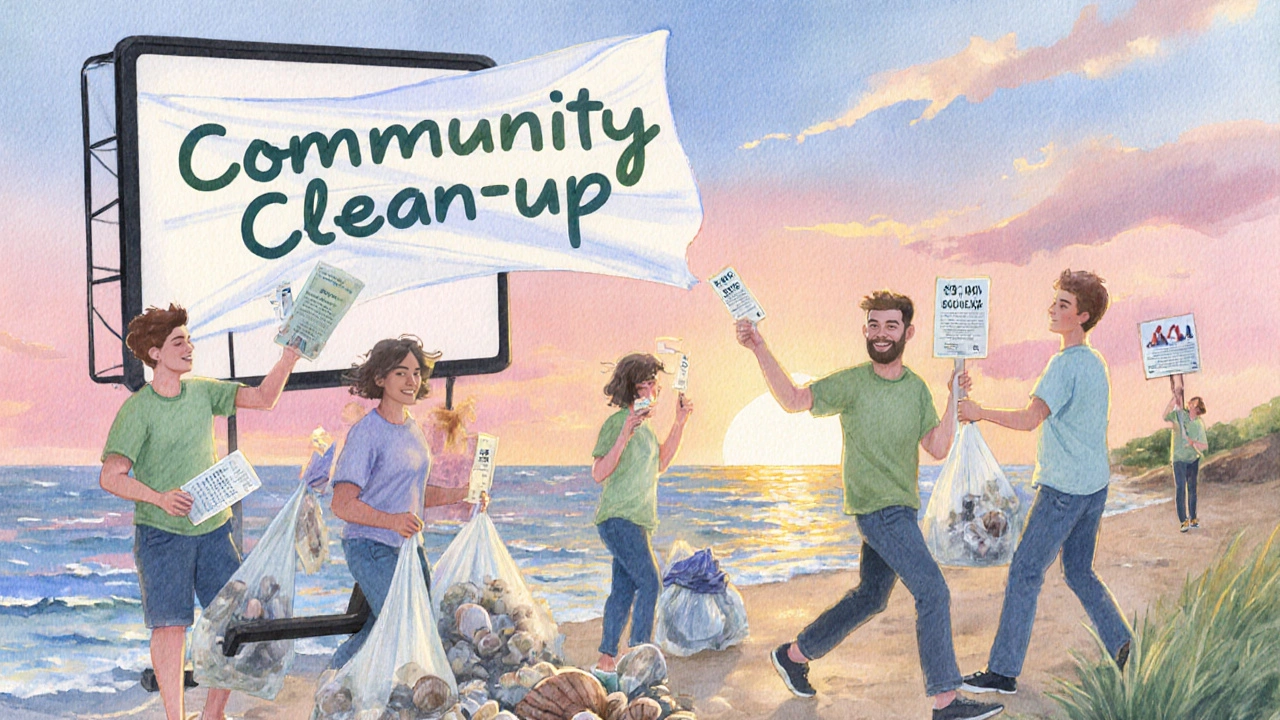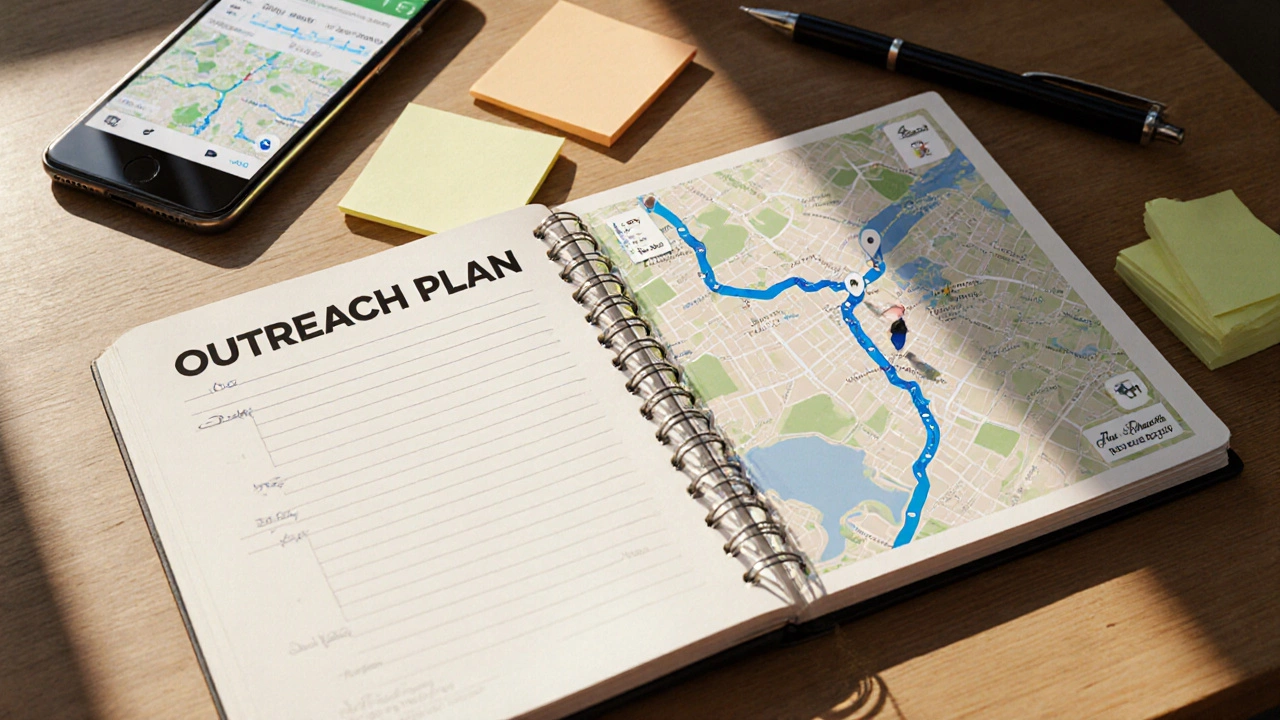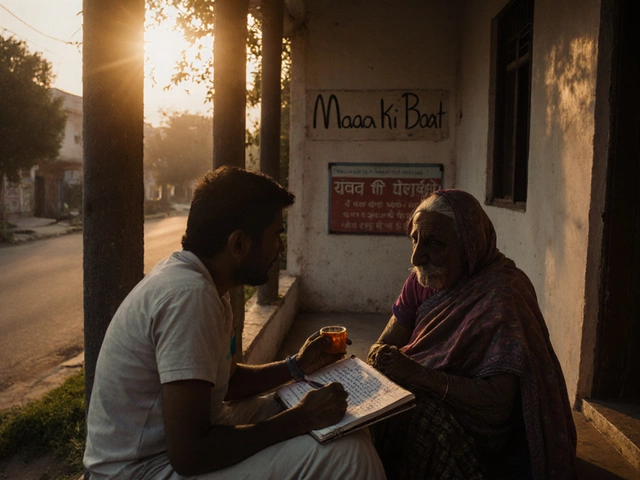Outreach Plan Checklist Validator
Checklist Validator
Ensure your outreach plan includes all essential components. Check each item as you complete it in your plan.
When you set out to connect with a community, the difference between a scattered effort and a lasting impact usually comes down to one thing: a solid outreach plan. Without a clear roadmap, good intentions can quickly turn into wasted time and resources. Below you’ll find everything an outreach plan should contain, why each piece matters, and how to stitch them together into a cohesive strategy.
What an Outreach Plan Actually Is
Outreach Plan is a structured document that outlines the objectives, tactics, resources, and timeline for engaging a specific group or community. It serves as both a guide for the team executing the outreach and a communication tool for partners and funders. Think of it as a GPS for your community‑building journey: it tells you where you’re headed, which roads to take, and how you’ll know you’ve arrived.
Core Components of an Effective Outreach Plan
Every robust outreach plan includes a set of core components. Missing any one of them can leave gaps that undermine the whole effort.
- Situation Analysis - A snapshot of the current context, including community demographics, existing programs, and any challenges.
- Goals and Objectives - Clear, measurable outcomes you aim to achieve.
- Target Audience - The specific group(s) you intend to reach.
- Stakeholder Map - A list of internal and external partners who will help or be affected.
- Key Messages - Core ideas you want the audience to remember.
- Communication Channels - The media, events, and tools you’ll use to deliver your messages.
- Timeline & Milestones - When each activity will happen.
- Budget & Resources - Funding, staff time, and material costs.
- Evaluation & Metrics - How you’ll measure success and learn for the future.
Deep Dive Into Each Section
1. Situation Analysis
Start with a quick audit of the environment. Gather data on population size, age distribution, cultural norms, and existing services. For example, a Wellington‑based youth program might note that 40% of local teens are not in school, indicating a need for after‑school tutoring.
Use reputable sources like census data, local government reports, or community surveys. This foundation helps you avoid assumptions and grounds the rest of the plan in reality.
2. Goals and Objectives
Goal is a broad, overarching result you hope to achieve, while objective breaks that goal into concrete, time‑bound targets. A good goal follows the SMART framework (Specific, Measurable, Achievable, Relevant, Time‑bound). Example:
- Goal: Increase community participation in local environmental clean‑ups.
- Objective 1: Recruit 200 volunteers for the July shoreline event.
- Objective 2: Secure three local business sponsors by June 1.
3. Target Audience
Target Audience is the specific group of individuals whose behavior you want to influence, such as “parents of primary‑school children” or “small‑business owners in the downtown precinct”. Define demographic details (age, income, language) and psychographic traits (values, motivations). The more precise you are, the easier it is to tailor messages.
4. Stakeholder Map
Identify anyone who has a stake in the project’s outcome. This includes internal team members, partner NGOs, local councils, schools, and even media outlets. For each stakeholder, note their role, interest level, and preferred communication style.
Stakeholder is any individual or organization that can affect or be affected by the outreach effort. A simple matrix can help visualize relationships:
| Stakeholder | Interest | Influence | Engagement Strategy |
|---|---|---|---|
| Local School Board | High | Medium | Quarterly briefing meetings |
| Community Radio | Medium | High | Weekly interview spots |
| Volunteer Group “Eco‑Warriors” | High | Low | Monthly training workshops |
5. Key Messages
Distill what you want the audience to think, feel, and do. Keep messages short-ideally one sentence each-so they’re easy to remember. Example for a health‑awareness campaign: “A 10‑minute walk a day can boost your immunity.”
6. Communication Channels
Communication Channel is any medium used to transmit your key messages, such as social media, flyers, community meetings, or radio spots. Match each channel to the preferences of your target audience. Younger audiences may respond best to Instagram Stories, while older residents might rely on printed newsletters.
Here’s a quick compare‑and‑contrast of two popular approaches:
| Aspect | Traditional | Digital |
|---|---|---|
| Cost | Moderate (printing, venue hire) | Low to moderate (ads, software) |
| Reach Speed | Slow (mailing, word‑of‑mouth) | Instant (posts, emails) |
| Tracking | Hard (surveys) | Easy (analytics) |
| Community Feel | High (face‑to‑face) | Variable (depends on interaction) |
7. Timeline & Milestones
Timeline is a visual or tabular representation of when each activity will occur, often broken down into weeks or months. Use a Gantt chart or a simple table to show start dates, end dates, and responsible parties.
Example:
- Week 1‑2: Conduct community survey (Lead: Outreach Coordinator)
- Week 3‑4: Draft key messages (Lead: Communications Team)
- Week 5: Launch social‑media teaser (Lead: Digital Specialist)
- Week 6‑8: Host three neighborhood meetings (Lead: Volunteer Leads)
8. Budget & Resources
Outline all expected costs: staff hours, printing, venue rentals, advertising spend, and any technology subscriptions. Include a contingency line (usually 10‑15%) for unexpected expenses.
Tip: Use a spreadsheet that links each budget item back to a specific activity in the timeline. This makes it easy to see where money is going and adjust if needed.
9. Evaluation & Metrics
Metric is a quantifiable measure used to gauge progress toward an objective, such as “number of volunteers recruited” or “social‑media engagement rate”. Pair each objective with at least one metric.
Common evaluation methods include:
- Pre‑ and post‑surveys to assess attitude changes.
- Attendance tallies at events.
- Website analytics for digital campaigns.
- Focus groups for qualitative feedback.
After the outreach period ends, compare actual outcomes to your original goals. Document lessons learned in a brief “Post‑Project Review” and feed insights back into the next cycle.
Putting It All Together - A Sample Outreach Plan Outline
Below is a concise template you can copy into a Google Doc or Word file and fill out for your own project.
1. Executive Summary 2. Situation Analysis 3. Goals & Objectives (SMART) 4. Target Audience Profile 5. Stakeholder Map 6. Key Messages 7. Communication Channels + Tactics 8. Timeline (Gantt or table) 9. Budget Breakdown 10. Evaluation Plan (Metrics & Methods) 11. Risks & Mitigation Strategies 12. Appendices (survey tools, consent forms, etc.)
Use this outline as a living document-update it as you get new data or as community needs shift.
Common Pitfalls and How to Avoid Them
- Vague goals: Replace “raise awareness” with “increase event sign‑ups by 30% in three months.”
- Ignoring stakeholders: Conduct a stakeholder interview early to surface hidden expectations.
- Skipping evaluation: Even a simple post‑event poll can reveal what worked.
- Over‑reliance on one channel: Diversify-mix flyers, door‑to‑door visits, and online posts.
- Under‑budgeting: Add a 10% contingency and track spend weekly.

Quick Checklist - Does Your Outreach Plan Have All the Essentials?
- Clear situation analysis with recent data?
- SMART goals linked to measurable objectives?
- Defined target audience with demographic and psychographic details?
- Comprehensive stakeholder map and engagement plan?
- One‑sentence key messages for each audience segment?
- Chosen communication channels that match audience preferences?
- Realistic timeline with milestones and responsible owners?
- Detailed budget with contingency?
- Evaluation framework with specific metrics?
Next Steps - Launching Your Outreach
- Gather your core team and assign a lead for each component.
- Fill the template using existing data; flag any gaps for quick research.
- Present the draft to key stakeholders for feedback; iterate within a week.
- Finalize the document, secure approval, and lock in dates and budgets.
- Kick off the first activity-track everything from day one.
Remember, an outreach plan isn’t a static file; it evolves as you learn about the community you serve. Keep it visible, revisit it regularly, and you’ll see stronger participation and lasting impact.
How long should an outreach plan be?
The length varies with project complexity. A small community event may need a 2‑page plan, while a year‑long multi‑partner initiative often runs 10‑15 pages, including detailed budgets and evaluation frameworks.
Do I need a separate plan for each communication channel?
Not a full separate plan, but each channel should have its own tactical sheet that outlines content, frequency, responsible person, and metrics. This keeps the master plan tidy while ensuring channel‑specific details aren’t missed.
How often should I review the outreach plan?
Schedule a formal review at key milestones-e.g., after the first major event or quarterly for longer campaigns. Rapid‑cycle check‑ins (weekly or bi‑weekly) are useful for tracking day‑to‑day execution.
What’s the best way to involve volunteers in the planning process?
Hold a short “planning jam” session where volunteers brainstorm ideas, then map those ideas onto the existing framework. Assign volunteers to specific tasks-like flyer design or social‑media posting-so they feel ownership.
How can I measure the long‑term impact of my outreach?
Beyond immediate metrics, set up follow‑up surveys at 6‑month and 12‑month marks. Track changes in community behavior-like increased recycling rates or higher school attendance-and compare them to baseline data from your situation analysis.






